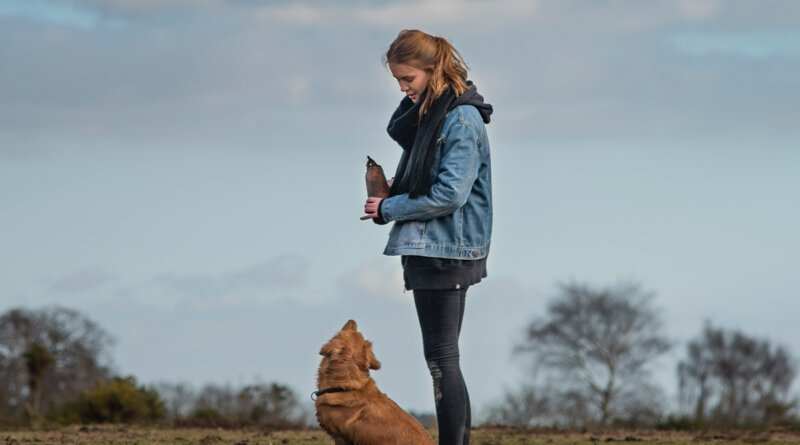I Blame My Increased Screen Time On Dog Training Videos
Whether the culprit is movies, Zoom calls, social media or YouTube videos, there is a lot of increased screen time going around. I’ve joined that trend, too, becoming more of a dog training video junkie than ever. (It’s not necessarily something to be proud of, but it’s not something to be ashamed of either.) I honestly can’t tell you how many dog training videos I have watched. The enormous quantity has created a bit of a blur, not unlike the blur that has made it hard to know the day of the week. However, I can tell you that the following three videos were memorable because they demonstrate techniques and principles in dog training that I wish more people knew about. The kernels of wisdom in these short clips can help everyone be more successful when they train their dogs.
Stimulus Control
In this short video called “What A Cue Can Do”, trainer Kathy Sdao of Bright Spot Dog Training is working on the cue “Lounge” which tells the dog to lie on his side with his head resting on the ground. What I love about this video is its illustration of a particular part of putting a behavior under stimulus control. When a behavior is under stimulus control, it means that 1) the dog always performs the behavior when he is given the cue, 2) he does not offer the behavior in the absence of a cue, 3) he does not perform the behavior in response to any other cue, 4) he does not perform some other behavior in response to this cue. That’s a complex way of saying that the cue and the behavior are tightly linked. In the video, Kathy is working on teaching this dog that he will not get reinforced for performing the “Lounge” behavior unless she has given him the verbal cue for that behavior. (That corresponds to the second point above.) A couple of times, he does the lounging behavior but since no cue was given, he receives no treat for his actions.
GET THE BARK IN YOUR INBOX!
Sign up for our newsletter and stay in the know.
Reinforcement For Attention (And For So Much More)
In the next video, which is called “Vito 4-part behavior sequence April 2020” trainer Laura Monaco Torelli of Animal Behavior Training Concepts works with her dog Vito, who receives lots of reinforcement for his attentiveness. So often when a dog is calm and attentive, trainers get asked, “Why are you giving him treats. He isn’t doing anything.” However, when it looks to some people that he is doing nothing, Vito is doing all kinds of things and making all kinds of great choices. He is ignoring distractions, standing in front of Laura and offering her his attention, which is part of why this video caught my attention. Beyond being attentive, Vito has many opportunities to succeed and receive reinforcement because Laura asks for a lot of different behaviors. Four of the behaviors are in a chain, which is a series of behaviors in which Laura cues Vito for each one rather than just at the beginning of the series of behaviors. She only offers treats at the end of the sequence, but the cues (both visual and verbal) given during the sequence are conditioned reinforcers, meaning that the cues have such positive connections to Vito that they serve as reinforcers. The sequence consists of spinning in one direction, spinning in the other direction, a play bow, and closing a cabinet door. One of my favorite parts of the video is watching Vito, who is an adolescent, resist the urge to go to the toy on his first spin. Vito also relaxes, continues to be attentive, and walks through Laura’s legs, and he is reinforced for all of those behaviors.
Proofing Behavior
In the last video, “Front Door Down-Stay on Bed: Steps 11 and 12”, trainer Jennifer Pratt of Wag the Dog and Company LLC is helping proof her dog’s down-stay. “Proofing” is the process of teaching dogs to generalize their skills so that they can respond correctly to a cue in a variety of places and with different distractions. In other words, proofing is doing advanced training with a dog so he does what you ask no matter where he is or what is going on. Teaching a dog the behavior you want him to do is only one step towards having a dog who is well-trained. It’s only once people understand that proofing is a big part of dog training that they stop being surprised and saying things like, “I swear he knows it! He’s so good about coming at home!” when their dog ignores them at the dog park. In this video, Jennifer is working on proofing her dog’s stay when she opens the door for visitors. It takes a lot of repetition and a step-by-step approach in which progress is broken down into pieces—and that’s only once a dog already has a really good down-stay. This video shows two steps: a down-stay when the door is opened (which her dog Atticus Finch can already do) and a down-stay when she pretends there are actual visitors by greeting the imaginary guests. This video illustrates something that all dog trainers teach their clients—it takes a lot of practice and a methodical process of training in increasingly challenging circumstance to get the behavior we want in the situation in which we really need it. Many dogs can do a wonderful down-stay at home when nothing else is going on but few can do so when the doorbell rings and when the door is opened for visitors. Similarly, many dogs can come when called in the living room, but few can do so at the dog park. Only by proofing a dog’s behavior can any dog truly act like a well-trained dog when it counts.
All of these trainers know that there are no shortcuts and that it takes many steps and a lot of repetition to succeed when training dogs. The details of training delight me, and I have plenty of time now to indulge in the joy of watching videos showing people working with their dogs. These three videos show professional trainers in action. All three women worked hard to get the behavior they want, but what’s just as obvious is they are patient, they take great pride in their dogs’ successes, and they are having fun.




